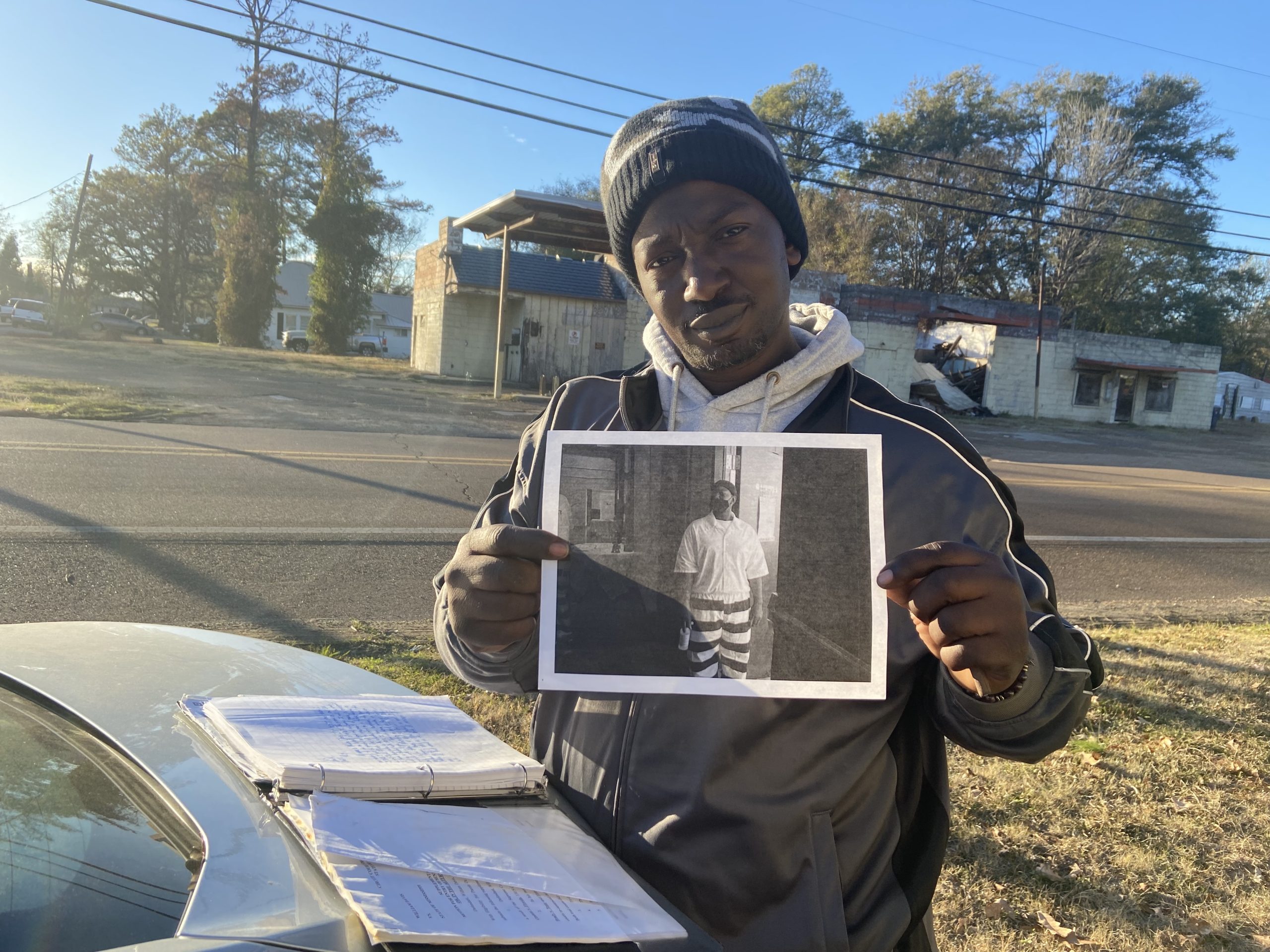Mississippi Today
At 17, William Davis was convicted of a murder he did not commit. His conviction was not wrongful. But is the legal doctrine behind it just?
At 17, William Davis was convicted of a murder he did not commit. His conviction was not wrongful. But is the legal doctrine behind it just?
The murder of Billy Dover spread quickly through Quitman County, a rural stretch situated in the northwest Mississippi Delta, where most of the residents are Black and earning below the poverty line.
As the afternoon of July 3, 1998, wore on, the news of what happened at the Western Auto Store traveled four miles up Highway 3 from Lambert, where it was located, to Marks, where William Davis, then 17, was waiting in line to buy a drink at Fred’s Dollar Store. William and his best friend, 19-year-old Andre Smith, had stopped on their way to Batesville to get a Band-Aid for Andre’s bleeding hand.
“Have you heard? Someone went and killed Billy Dover,” the woman behind the cash register said as she rang up their items.
Bells went off in William’s head. Andre turned to look at William, but no one said anything. Killed him? William had not heard that. This is crazy, he thought to himself. I didn’t expect for none of this to happen.
At age 13, William had moved from the farmland of Vance, Mississippi, to the small town of Lambert, after his dad, a tractor driver, had died suddenly of cardiac arrest. The highway sign welcoming people into Lambert boasts the slogan: “A City of Hope.”
William’s mom worked night shifts at a nursing home to support her six children, and William, the youngest, was often left home alone. His first year living in Lambert, William watched the streets from his porch: Kids were smoking and selling weed up the block; older men were smoking crack behind his house. After school, he would sit from 3-10 p.m. on the porch of his yellow and green craftsman-style house at the corner of Darby Avenue — Lambert’s main road — and the highway, and watch the streets. At 14 years old, he joined them. An older neighborhood kid handed William an ounce of weed and demanded he return with money. William started selling weed, then crack, which provided easier and faster cash.
Andre, a neighbor from Vance, moved up to Lambert, too. He was two years older, part of a gang, and known for getting into fights. William’s mom asked him to stop hanging out with Andre. Instead, in ninth grade, William stopped going to school. Every day, he would meet up with Andre to smoke weed, sell crack, and gamble. Often, they would gather outside the Western Auto Store, which was at the center of town.
When William had met up with Andre outside the Western Auto Store on July 3, 1998, he was mad. They wanted to go shopping for the Fourth of July in Batesville, but last night, Andre lost the money William had lent him in a game of dice.
The Western Auto Store was a neighborhood institution, as was Billy Dover, the white 65-year-old man who owned and ran it. Customers would come into the store to buy materials for their bike or car or household appliances, to sit in recliners and watch TV with Dover or even to borrow some money, which he was generous about lending. William and his family, like most people in the area, knew Dover well. Dover had a large family of 11 sons and daughters, including stepchildren, and acted like a father figure to the town. The Davis family would go to Dover’s store even when they lived in Vance. Dover put the training wheels on William’s first bike.
Standing outside the store on July 3, 1998, arguing with William about money, Andre came up with a plan.
“He told me he had an idea of how to get him some money. I’m like, ‘Go ahead. I’m going to go along with it,’’’ William said.
Andre had a plan to steal from Dover. Andre ended up killing him.
Eight years after the murder of Billy Dover, and eight years after being picked up by the police, William Davis sat in his Unit 32 cell of the Mississippi State Penitentiary and began to write down the details of his case. It was 2006; he was now 25 years old, but he still didn’t understand how he had ended up here.
Unit 32 was a notorious lockdown facility in the state — inmates let out of their cells for only one hour per day — and had made state headlines for its inhumane conditions, outbreaks of violence, and reports of inmate deaths. William had witnessed a friend get stabbed. Two men attacked William with a weapon, and he received a disciplinary charge, later expunged from his record, for fighting back in self-defense. A lawsuit put forth by the American Civil Liberties Union shut down the unit in 2010, but in 2020 reports surfaced of inmates being housed there again.
A ward in Unit 32, Timothy Morris watched as William’s mom cried to him during a visit. Timothy approached William after and asked him: “What are you going to do to make your mom proud? She’s cried enough with you being in this place.”
William went back to his cell and started to write, thinking that maybe if he understood why he was in here, he could find his way out of here. He had 21 bullet points detailing what he remembered happened between the morning of the crime and the day of his arrest. Titling the section, “Specific Facts Not Within Petitioner’s Personal Knowledge,” William wrote down what he didn’t understand. How was he convicted of capital murder if he never killed anyone?
In the unit, away from the violence, there was a group of guys “practicing litigation,” as William puts it. They were ordering books from the law library, comparing their cases, and filing post-conviction appeals. Many of the guys in the legal circle at the prison were also fighting murder cases, so they poured over legal scholarship together, trying to break down their cases and to help each other write their own motions.William started sitting with them and learning about the law. At night, he would leave order slips under his cell for new books and cases from the law library. The next day, copies would show up at his door, and he would consult his legal dictionary to understand the terminology.
“I didn’t understand until I started doing research on cases, filing paperwork, and studying law,” he said. That’s when William learned about the felony murder rule, and how it was operating in Mississippi. “That’s when I started to understand.”
Under the felony murder rule, if someone is killed during the commission of a felony, those who participated, even tangentially, are able to be charged with murder, without planning, intending, or committing it.
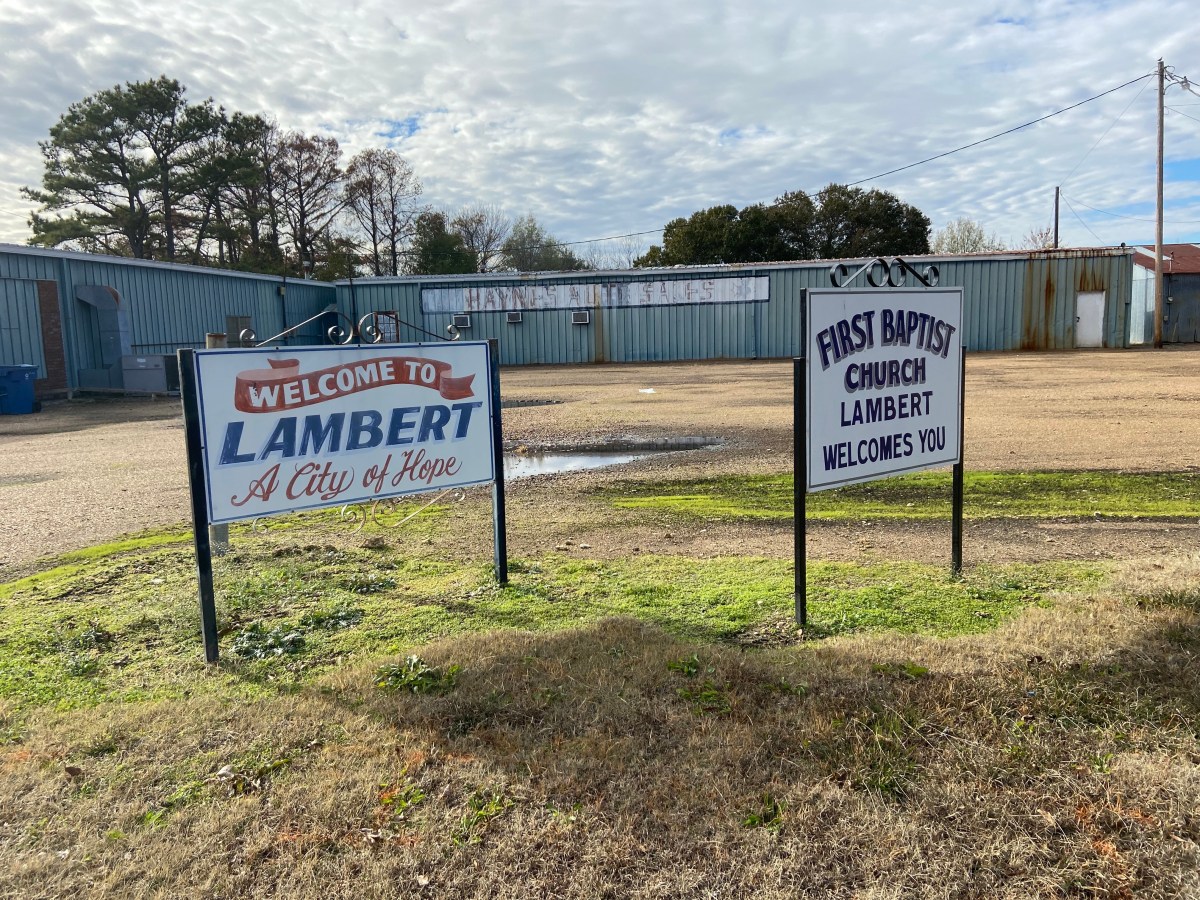
Standing outside the Western Auto Store on the morning of July 3, 1998, Andre gave William instructions: Enter the store and purchase a hose for a washing machine. Once inside, William watched as Dover cut the hose for him and confirmed it was the right one. William brought the hose back out to Andre.
Later, District Attorney Laurence Mellen would say that this was how “the defendants made preparation for the crime,” a document from the Quitman County Circuit Court reads, “by having entered the store, making themselves aware of whether the victim Mr. Dover was alone.”
Andre went inside the store under the pretense of returning the hose. Dover said that once it was cut, the hose couldn’t be exchanged. Andre argued. “It escalated from there,” William said. “I don’t know if that was the actual reason for what transpired. But I do know that when that happened, I left.”
In court, Mellen detailed what he asserts happened inside: “Davis went to the cash register, tried to get in, while Lushun, Andre Lushun Smith, had taken Mr. Dover to the back of the building on the pretense of buying something back there, assaulted him there in the back, and beat him the back of the store. The State would prove that Davis left a fingerprint on the cash register in the front while the assault was being made in the back. Smith assaulted Mr. Dover with a bicycle pump and repeatedly beat on him,” Mellen said. “They did take the wallet from Mr. Dover, Mr. Billy Dover, which had money in it.”
Dover survived for a few minutes after Andre’s beating, court documents report, but was discovered dead by Dover’s son on the floor of his store.
Davis said that when he heard Andre and Billy Dover fighting, he left. The next time William saw Andre, he had blood on his shirt. He thought to himself: “Ah, man, let me get away from this. Let me get away from this.”
Andre handed him cash. He asked Andre to change his clothes, but he didn’t ask Andre what happened. Hours later, when the woman behind the cash register at Fred’s Dollar Store confirmed to William that Dover had indeed been murdered, he was just as shocked as her. “I didn’t think he would go that far. I never thought it would get to that point,” he said.
After Andre was picked up by the police and taken into questioning, the Smith family came to William’s house and demanded to know what they did. William replied with the line he would later start using on everyone: “I can’t speak on what he did or didn’t do. If I leave a place, if I remove myself from a situation, how can I know what’s going on there?”
When the police came and took William into questioning, he tried to get them to understand that he wasn’t present during the murder. If he never even saw the murder, how could he have done it? “I hadn’t done anything. I didn’t do this. I didn’t murder anyone. That was my whole thing, I was trying to convey to them that I murdered no one,” he said.
But what William himself didn’t understand at the time was that, under the felony murder rule, it didn’t matter if he had killed anyone or not.
“To be honest, the trouble with felony murder is because there is such a wide range of culpability, that allows you to go to jail forever,” said Walter Boone, a Clarksdale lawyer who later worked with William on his case. “Were you just the pick-up driver, or did you go in? Did you participate in the robbery? Did you know about the murder in advance and plan it and participate in it? The felony murder does not distinguish between the levels of culpability on that.”
The felony murder rule is enacted in 44 states across the country, with charges and sentences at varying levels of severity. Recent legal reform in California has limited felony murder to the death of an on-duty police officer, the direct killing of someone, or intentional aiding and abetting of a murder. In some states, like Colorado, felony murder is considered second-degree murder, reducing the penalty and sentencing time. But in Mississippi, felony murder falls under the capital murder statute. Those convicted of capital murder are either sentenced to death, life without parole, or life with parole—but only if the crime was committed before July 1, 1994.
In Mississippi, “Capital murders are disproportionately felony murders,” State Public Defender André de Gruy explains. A review of available data, provided by the internal system in the Mississippi Administrative Office of Courts, reveals there have been 301 capital murder sentences given across the state between Jan. 1, 1994, and Sept. 23, 2022. Of those capital murder sentences, 226 were for felony murder cases.
For the state to convict someone of capital murder, de Gruy said, “they don’t have to prove the murder, they only have to prove the underlying felony, or the intent to do the underlying felony. They don’t have to prove an intent to kill.”
“The felony murder rule in Mississippi is very broad. They still allow a non-triggerman to get the death sentence,” de Gruy said.
As a result, individuals at the very periphery of a killing are being trapped with the same charges, and potential sentences, as the murderers themselves.
De Gruy pointed to a 1989 case as an example. A 15-year-old, Vincent Harris, sat on the handlebars of his co-defendant’s bike as they rode to a convenience store. Before they arrived, Harris jumped off the bike and waited by the side of the road, as his co-defendant, Ron Foster, continued to the market. Foster attempted to take money from the cash register and ended up shooting the clerk, but Harris, who was miles away at the time, was still charged initially with capital murder.
Champions of the felony murder rule often refer to the deterrence theory as support, legal scholar Kat Albrecht stated in her paper “Data Transparency, Compounding Bias, and the Felony Murder Rule.” When examining a case in Illinois, she wrote that the state’s attorney argued that the “felony murder rule deters felony commission because offenders know that if something goes wrong, and someone dies, they will be charged with murder regardless of their intent or who actually pulled the proverbial trigger.” This, in theory, should lead to less crime, but in practice falls apart as offenders, especially juveniles, often aren’t aware of the technicalities of the law — or thinking in such terms when committing crimes that they do not believe will involve a death.
“Well-established brain development science shows that children and teenagers are less able to perceive risk or anticipate consequences than adults,” said Jody Kent Levy of the Campaign for the Fair Sentencing of Youth, according to a report by the Restore Justice advocacy group.
In his work, de Gruy said he has seen some patterns connecting felony murder cases and juvenile cases anecdotally.
“Among the juvenile cases, you’re more likely to see a multiple defendant case,” de Gruy said. “Let’s say you see an argument at a gas station that escalates to a shooting. If there’s one person involved, it’s usually someone a bit older. If there’s a car full of people, it’s probably younger people,” he said.
In cases with multiple defendants, which are more likely to involve juveniles, there is also a higher likelihood that some of those people will have only tangential relationships to the crime at hand. If someone is shot during a crime, and the getaway car is full of young people, they could all be charged with capital murder in Mississippi under the felony murder rule.
When William heard he was being charged with capital murder, he said, “I hit the floor.” At the time, in July 1998, the Supreme Court had not yet ruled on Roper v. Simmons, which outlawed the death penalty for juveniles. William’s youth — his developing brain, his potential for rehabilitation, his susceptibility to peer pressure — would not even be a consideration in his sentencing. If he went to trial, the state was going to pursue the death penalty.
Charles E. Webster, now the judge in the 11th Circuit Court District, was William’s court-appointed lawyer. He encouraged William to plead guilty — his life was on the line. But William didn’t want to give up his dignity. “I can’t say I’m guilty of killing this man when I know I didn’t,” he said.
Webster went to William’s mom and explained what was at stake: If they committed to a plea deal, it would save his life. W“My heart fell in my stomach. It was devastating for me. I couldn’t believe it,” Ernestine Davis said.
She went to William crying, “My baby. I don’t want to see that happen.” For his mom, William said, he agreed to enter a guilty plea.He would be sentenced to life in prison, without parole.
The details of William’s case have become blurry in Webster’s memory over the past two decades, but, like the other felony murder cases he dealt with in his career, Webster said, “most of the time, these are tough calls.”
After reviewing William’s court documents, he remembered what guided his thinking on the case: “The evidence seemed pretty strong,” he wrote — meaning that documents show William had entered the store prior to the robbery and his fingerprint was found on the cash register.
“Guilt or innocence may not have been much of an issue. As such, the best outcome may have been simply guaranteeing the death penalty was off the table. It may be that looking at it 23 years later avoiding a chance of the death penalty doesn’t seem that significant; I assure you that when it’s you that the state is trying to put you to death — it’s a big deal,” Webster wrote.
Looking back on his guilty plea 23 years later, William feels it was a big deal that he didn’t get to have a voice in court: “I didn’t even have an opportunity to fight for my freedom,” he said. “I’m looked upon now as a murderer.”
On May 12, 2000, William appeared in Quitman County Circuit Court for his sentencing.
“You’ve heard the prosecutor tell the Court what his office recommends as to your sentence: life without parole. Do you understand that?” Circuit Judge Elzy Smith asked him.
William nodded his head up and down.
“Answer up, please,” Julia Phillips, the court reporter said.
“Yes, I do,” he responded.
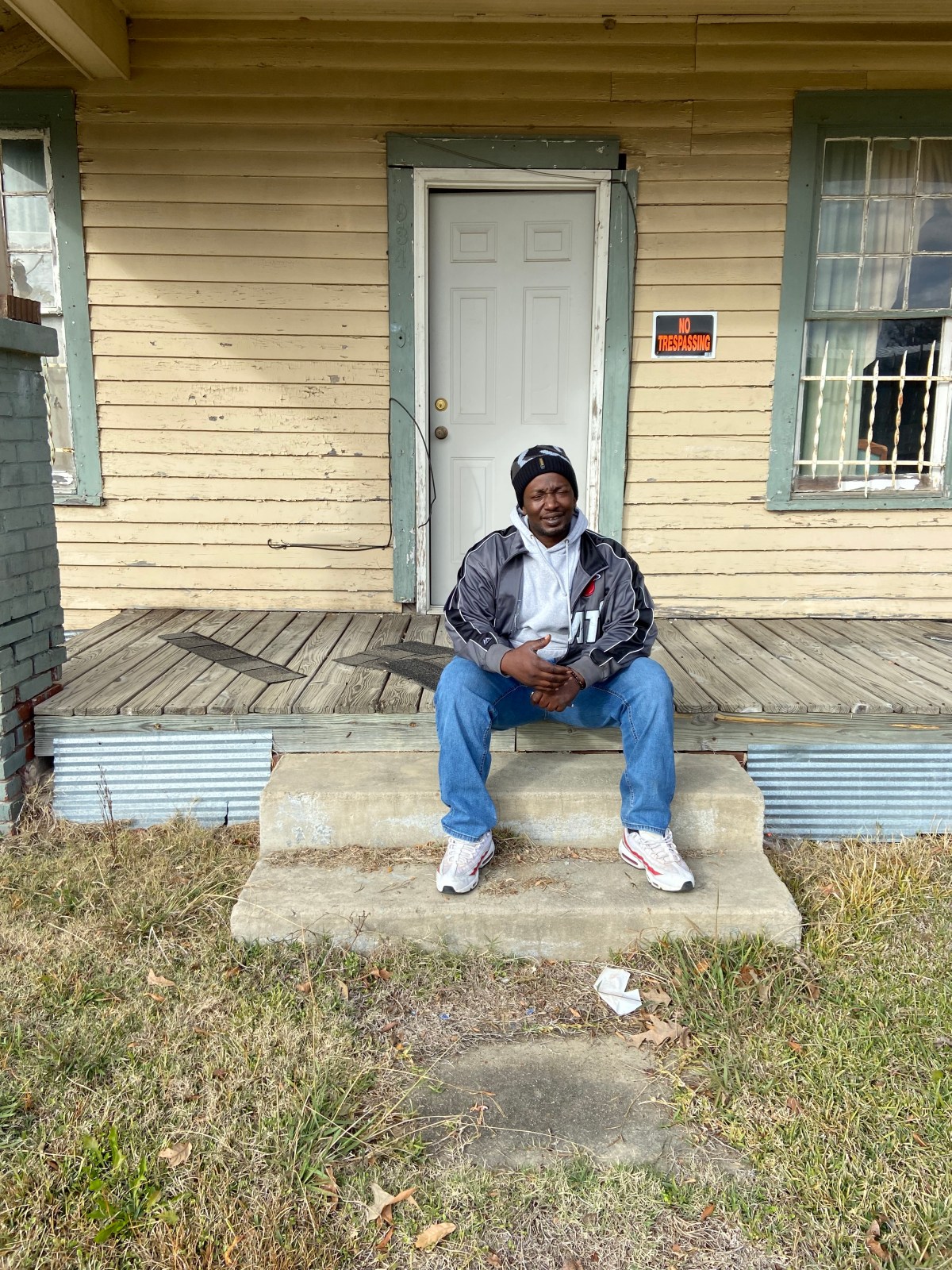
For weeks, William spent his nights awake writing in his cell. He moved from writing down the details of his case — those which he understood, and those which he didn’t — to formulate an appeal for his case. Working with Frank and Charlie, friends who also had murder cases, William learned the law.
“I put my idle time into legal work, reading the Georgetown Law Journal, ordering cases every week,” he said.
William began penning a new section, titled: “Legal Argument.” On June 12, 2006, he submitted his motion to vacate his sentence. Two years later, he received a note back from the court: His appeal was rejected.
“That could have been a demoralizing point,” William reflected. But, around the same time, he had received another letter in the mail. Someone was interested in his case.
Marie Satterwhite wasn’t a lawyer, but she had personal experience with trouble coming from “being with the wrong person at the wrong time,” as she puts it. Her son had hung out with teenagers in the street gangs of Quitman County. He passed a bag of drugs from the seller to an officer disguised as a buyer — and was sent to prison. Satterwhite shared her son’s story when giving a talk at First United Pentecostal Church in Marks.
“I was telling the church that no matter how you raise your children, if they get in with the wrong crowd, you never know what the other person is going to do,” she said. Or how that will impact your kid.
After her talk, William’s mother, Ernestine, approached her and shared William’s story. “I didn’t know that other mothers were going through the same thing that I was going through,” Satterwhite said.
Satterwhite wanted to hear from William himself and, in 2008, wrote him a letter asking about his case. He sent her the write up he had spent the weeks of 2006 forming — the facts, the questions, the legal argument and appeal. When she read his pages, she felt filled with a responsibility — she had to try to get him out of prison. Satterwhite went to every lawyer she knew in the Quitman County area and asked them if they could take on William’s case.
“I left the papers there and I gave them my number to get back in touch,” she said. Each one read the papers and called her. “They all said, ‘He’s got a case, but we’re booked,’” she recalled.
Satterwhite didn’t lose faith. She decided to turn to her church for help. She brought William’s papers to her church pastor, and together they anointed his papers with oil and prayed over his papers. “The whole church stood up, and we all agreed he was going to get out,” she said.
Satterwhite led talks at a youth group every month at the Blue Mountain Church. With no more lawyers to share William’s story with, she started to share it with the 16-year-old boys in the group. She would write William with questions about how he got into his situation, how he survived it, how he stayed strong. And William would respond with notes she could weave into her talks at the church.
“I wanted to write home the fact that your environment doesn’t have to define you. Anyone that wants to be something, you have to learn your behavior. If you have time, effort, and the opportunity, you can be anything you choose to be,” he said.
William admitted: “You make mistakes in life.” He didn’t want them to do the same. Still, now, mothers come up to Satterwhite and thank her for sharing William’s story with the group and for getting their sons on the right track.
While William was initially disappointed that no lawyers or court had interest in his case, he was resolved to continue doing the legal work himself. “People came into my life and blessed me with the energy to move forward, the energy to persevere,” he said, referring to Satterwhite. “I then, in turn, tried to elevate myself. I used books, papers, the law. That gave me a focus to try and get freedom.” He continued to study cases, to read the Annual Review of Criminal Procedure to see what new laws had passed, to exchange ideas in his legal circle.
In the spring of 2013, Timmie Hubert, who was in his group, heard some news. A lawyer had contacted him about trying to vacate his juvenile life without parole sentence based on a 2012 Supreme Court decision, Miller v. Alabama, that sentencing a juvenile to life without parole violated the Eighth Amendment.
“I thought man that should be me. I went and looked it up and studied it,” William said. He found out juveniles previously sentenced to life without parole could have their case considered for resentencing to life with parole. First, defendants had to petition to have their case heard. Then, a judge would review the case and decide if the defendant would be resentenced to life with parole or not.
A statewide effort, composed of nonprofits, the Office of the State Public Defenderand private law firms, formed and worked to locate incarcerated people who would be eligible to have their cases reviewed under Miller. Eighty-five people were identified, data from the Mississippi State Public Defender’s office reveals. “They are almost all felony murder cases,” André de Gruy said.
Before William was even notified of his eligibility — he filed his own Miller petition pro se to the Quitman County Circuit Court on June 21, 2013, using a model pleading Jake Howard from the MacArthur Center for Justice had published. The state effort took notice, and Walter Boone was assigned to his case pro-bono. “And that’s when everything started picking up,” Boone said. He began to prepare William’s case for a judge.
William awaited his hearing with other Miller candidates in Unit 30 of the Mississippi State Penitentiary. As those around him started seeing results, William grew hopeful. His friend Ricky Bell got resentenced to life with parole eligibility. He helped others in the unit file their pro se motions to get their cases heard. But, as four years passed, and he still hadn’t been seen in front of a judge, William started to worry.
The process of resentencing under Miller is difficult. Around a quarter of their cases were denied parole.
Boone encountered these difficulties when working on his cases. Overburdened judges are reluctant to vacate a criminal conviction that has already been sentenced by the court. Even if the crime was committed by a child, that doesn’t necessarily garner sympathy. Boone said that when judges get Miller cases in their hands, he speculates that many think: “Why are we spending time on this?” Of the 63 cases that have been heard since the passing of Miller, as many as 17 defendants have been refused parole eligibility.
Judges have a lot of discretion in Miller cases – and just have to note that Miller factors were considered in order to make a resentencing decision. Some judges view Miller cases as they would a parole decision – instead of an eligibility one, those working on the state effort noticed – making a life with parole sentence harder to obtain. Yet, even if a Miller case is decided favorably, the defendant still has to apply to be granted parole.
On Feb. 14, 2017, Judge Albert B. Smith released his decision on the Miller case for William Davis: He would be resentenced to life in prison, with the eligibility for parole.
“There is no evidence before the Court that Mr. Davis killed or intended to kill the victim in this case,” the order and judgment states. “Mr. Davis argues that he is not one of the ’uncommon’ and ‘rare’ juvenile homicide offenders who may be sentenced to life without eligibility for parole.” The Court agreed.
“Felony murder law has been the law for a long time. I think everybody who looks at it would say that it produces unjust results,” Boone said. “But the idea behind Miller is that, even if they made an evil choice at age 16, even if it was intentionally evil, that’s a kid and that kid is going to change and grow.”
William said the decision “made a world of difference” in his outlook. The possibility of freedom was, for the first time, within reach. “Things were finally happening,” he said.
William still had to address the Parole Board. He would have to present a case to the board that shows he had a support network and future plans after prison.
The Davis family wrote letters. “William was not a problem child,” Cedric Williams, his older brother, wrote. “We really hate this happened to Mr. Billy Dover. He really was a good man. I believe that William has paid his time.”William’s cousin, Lasandra Booker wrote about William: “One thing I know of this young man (is) he knows how to change for (the) better.”
William found a new motivation after being granted parole eligibility. He took college classes, including psychology, which taught him that people react in unpredictable ways under fearful circumstances and gave him a new perspective on the behavior of Andre Smith that day in the Western Auto. He also started teaching. “I wanted to learn how to actually help people. If I see something going on, I want to know how to approach it, diffuse it,” he said. “Because guys can lose their life.” And, to an extent, William feels like he did.
“Three people lost their lives pretty much. Big chunks of it. Billy Dover lost his life. Andre lost his life. And I lost a portion of my life that I can never get back,” he said. Andre Smith, who was 19at the time of the crime and not eligible for parole consideration under Miller, is serving a sentence of life without parole at the Marshall County Correctional Facility.
On Dec. 29, 2021, though, William got the rest of his life back: He was granted parole.
In a matching blue sweatsuit, provided by the state, William walked out of prison into the winter Mississippi air. Everything he wanted on his first day of freedom was so small: a bath, a pedicure, a hamburger. His mom and brother, Cedric, picked him up, drove straight through Lambert, and continued the 25-minute drive up the highway to his brother’s new house in Batesville.
Still, William was not quite free. In the court of public opinion, he said, he will forever be seen as a murderer. “This is what I’ll be for the rest of my life,” he said. “A whole family hates me – they don’t even know me – but they think I killed their loved one.”
The Dover family, who had advocated against William’s parole eligibility during his Miller hearing, did not want to comment.
Now, William lives in Horn Lake, an hour north of Lambert, by the border of Tennessee, and works a factory job with spices that make him sneeze. He tries to fill his free time, after work, with pottery and candle-making classes. He craves a schedule, and routine. He had developed that in prison. At any time, he can still say what is happening on the inside.
On a Monday evening in late November, when eating Alaskan snow crab legs at a Red Pier by his house, he looked at his watch and said, “It’s canteen night,” referring to the time where inmates can go buy items at the convenience store. Often, this night would turn violent, especially if someone didn’t have any money to spend, he reflected.
William’s good fortune is rare. In Mississippi, there are five Miller-eligible felony murder cases in which the defendant was not the triggerman in the murder. William Davis is the only one out on parole. Two have been resentenced to life without, one is awaiting his Miller hearing, and the other, Alexander Hymes, has been given parole eligibility but isn’t out yet. Around 15 guys, still on the inside, often call William and ask him for advice. On the outside, he and six paroled juvenile lifers keep in touch regularly, offering support and providing updates on jobs and family. They call their group Life After Life.
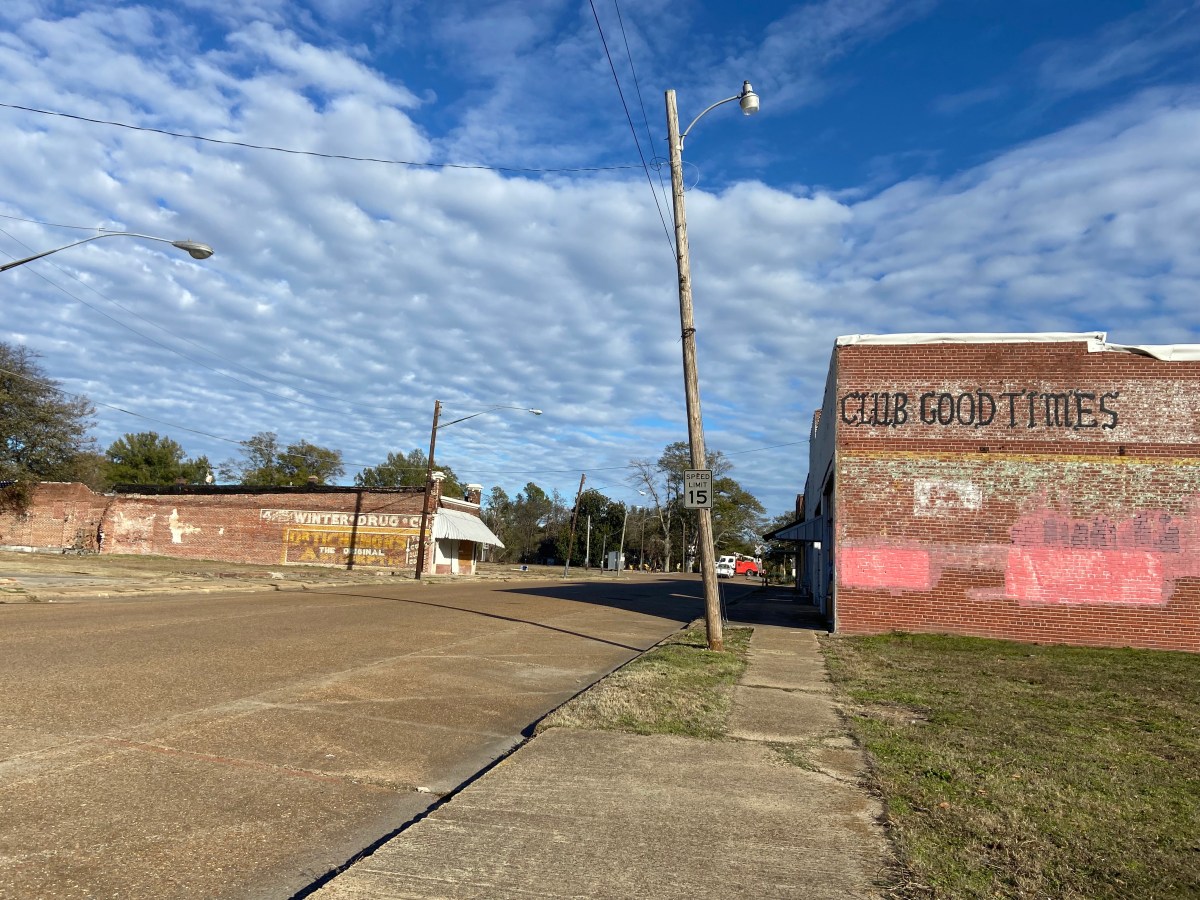
Almost a year after his release, William, now 42, stood outside his old yellow and green craftsman style house in Lambert. He sat down on the porch, and watched Darby Avenue, just as he used to when he was 13, before he joined the streets, before the incident at the Western Auto Store, before his capital murder conviction. There is a group of guys still smoking crack behind his house. People driving by honk and wave at him still. But, so much has changed. His house is empty and shuttered with a “No Trespassing” sign. The Western Auto Store is gone — only an empty lot remains. There’s no bank or club in town, just some graffiti that reads, “Club Good Times” on an abandoned brick building. As he walked his old path from his house to where the Western Auto Store once stood, every third car or so that passed by him honked. Around every fifth car stopped to pull over and talk to him.
“I don’t come down here. I really don’t. I try to stay out of this,” William said.
A police officer, Veronica Survillion, got out of her patrol car to give William a hug.
“When nobody believed, I believed in him,” she said. “You can basically go to prison for life for basically anything around here.”
William nodded but also laughed. As both a felony murder defendant and a Miller defendant, he was well aware of a paradoxical truth: while the legal system had locked him up for life, it had also set him free to a new one.
“I’m forever grateful,” William said, but then reflected, “I’ll forever be looked at as a murderer.”
This article first appeared on Mississippi Today and is republished here under a Creative Commons license.
Mississippi Today
Mississippi prepares for another execution
The Mississippi Supreme Court has set the execution of a man who kidnapped and murdered a 20-year-old community college student in north Mississippi 30 years ago.
Charles Ray Crawford, 59, is set to be executed Oct. 15 at the Mississippi State Penitentiary at Parchman, after multiple requests by the attorney general’s office.
Eight justices joined the majority opinion to set the execution, concluding that Crawford has exhausted all state and federal legal remedies. Mississippi Supreme Court Justice T. Kenneth Griffis Jr. wrote the Friday opinion. Justice David Sullivan did not participate.
However, Kristy Noble with the Mississippi Office of Capital Post-Conviction Counsel released a statement saying it will file another appeal with the U.S. Supreme Court.
“”Mr. Crawford’s inexperienced trial counsel conceded his guilt to the jury — against Mr.
Crawford’s timely and repeated objections,” Noble said in the statement. “Mr. Crawford told his counsel to pursue a not guilty verdict. Counsel did just the opposite, which is precisely what the U.S. Supreme Court says counsel cannot do,” Noble said in the statement.
“A trial like Mr. Crawford’s – one where counsel concedes guilt over his client’s express wishes – is essentially no trial at all.”
Last fall, Crawford’s attorneys asked the court not to set an execution date because he hadn’t exhausted appeal efforts in federal court to challenge a rape conviction that is not tied to his death sentence. In June, the U.S. Supreme Court declined to take up Crawford’s case.
A similar delay occurred a decade ago, when the AG’s office asked the court to reset Crawford’s execution date, but that was denied because efforts to appeal his unrelated rape conviction were still pending.
After each unsuccessful filing, the attorney general’s office asked the Mississippi Supreme Court to set Crawford’s execution date.
On Friday, the court also denied Crawford’s third petition for post-conviction relief and a request for oral argument. It accepted the state’s motion to dismiss the petition. Seven justices concurred and Justice Leslie King concurred in result only. Again, Justice Sullivan did not participate.
Crawford was convicted and sentenced to death in Lafayette County for the 1993 rape and murder of North Mississippi Community College student Kristy Ray.
Days before he was set to go to trial on separate aggravated assault and rape charges, he kidnapped Ray from her parents’ Tippah County home, leaving ransom notes. Crawford took Ray to an abandoned barn where he stabbed her, and his DNA was found on her, indicating he sexually assaulted her, according to court records.
Crawford told police he had blackouts and only remembered parts of the crime, but not killing Ray. Later he admitted “he must of killed her” and led police to Ray’s body, according to court records.
At his 1994 trial he presented an insanity defense, including that he suffered from psychogenic amnesia – periods of time lapse without memory. Medical experts who provided rebuttal testimony said Crawford didn’t have psychogenic amnesia and didn’t show evidence of bipolar illness.
The last person executed in Mississippi was Richard Jordan in June, previously the state’s oldest and longest serving person on death row.
There are 36 people on death row, according to records from the Mississippi Department of Corrections.
Update 9/15/25: This story has been updated to include a response from the Mississippi Office of Capital Post-Conviction Counsel
This article first appeared on Mississippi Today and is republished here under a Creative Commons Attribution-NoDerivatives 4.0 International License.
The post Mississippi prepares for another execution appeared first on mississippitoday.org
Note: The following A.I. based commentary is not part of the original article, reproduced above, but is offered in the hopes that it will promote greater media literacy and critical thinking, by making any potential bias more visible to the reader –Staff Editor.
Political Bias Rating: Centrist
The article presents a factual and balanced account of the legal proceedings surrounding a scheduled execution in Mississippi. It includes perspectives from both the state’s attorney general’s office and the defense counsel, without using emotionally charged language or advocating for a particular political stance. The focus on legal details and court decisions reflects a neutral, informative approach typical of centrist reporting.
Mississippi Today
Presidents are taking longer to declare major natural disasters. For some, the wait is agonizing
TYLERTOWN — As an ominous storm approached Buddy Anthony’s one-story brick home, he took shelter in his new Ford F-250 pickup parked under a nearby carport.
Seconds later, a tornado tore apart Anthony’s home and damaged the truck while lifting it partly in the air. Anthony emerged unhurt. But he had to replace his vehicle with a used truck that became his home while waiting for President Donald Trump to issue a major disaster declaration so that federal money would be freed for individuals reeling from loss. That took weeks.
“You wake up in the truck and look out the windshield and see nothing. That’s hard. That’s hard to swallow,” Anthony said.
Disaster survivors are having to wait longer to get aid from the federal government, according to a new Associated Press analysis of decades of data. On average, it took less than two weeks for a governor’s request for a presidential disaster declaration to be granted in the 1990s and early 2000s. That rose to about three weeks during the past decade under presidents from both major parties. It’s taking more than a month, on average, during Trump’s current term, the AP found.
The delays mean individuals must wait to receive federal aid for daily living expenses, temporary lodging and home repairs. Delays in disaster declarations also can hamper recovery efforts by local officials uncertain whether they will receive federal reimbursement for cleaning up debris and rebuilding infrastructure. The AP collaborated with Mississippi Today and Mississippi Free Press on the effects of these delays for this report.
“The message that I get in the delay, particularly for the individual assistance, is that the federal government has turned its back on its own people,” said Bob Griffin, dean of the College of Emergency Preparedness, Homeland Security and Cybersecurity at the University at Albany in New York. “It’s a fundamental shift in the position of this country.”
The wait for disaster aid has grown as Trump remakes government
The Federal Emergency Management Agency often consults immediately with communities to coordinate their initial disaster response. But direct payments to individuals, nonprofits and local governments must wait for a major disaster declaration from the president, who first must receive a request from a state, territory or tribe. Major disaster declarations are intended only for the most damaging events that are beyond the resources of states and local governments.
Trump has approved more than two dozen major disaster declarations since taking office in January, with an average wait of almost 34 days after a request. That ranged from a one-day turnaround after July’s deadly flash flooding in Texas to a 67-day wait after a request for aid because of a Michigan ice storm. The average wait is up from a 24-day delay during his first term and is nearly four times as long as the average for former Republican President George H.W. Bush, whose term from 1989-1993 coincided with the implementation of a new federal law setting parameters for disaster determinations.
The delays have grown over time, regardless of the party in power. Former Democratic President Joe Biden, in his last year in office, averaged 26 days to declare major disasters — longer than any year under former Democratic President Barack Obama.

FEMA did not respond to the AP’s questions about what factors are contributing to the trend.
Others familiar with FEMA noted that its process for assessing and documenting natural disasters has become more complex over time. Disasters have also become more frequent and intense because of climate change, which is mostly caused by the burning of fuels such as gas, coal and oil.
The wait for disaster declarations has spiked as Trump’s administration undertakes an ambitious makeover of the federal government that has shed thousands of workers and reexamined the role of FEMA. A recently published letter from current and former FEMA employees warned the cuts could become debilitating if faced with a large-enough disaster. The letter also lamented that the Trump administration has stopped maintaining or removed long-term planning tools focused on extreme weather and disasters.
Shortly after taking office, Trump floated the idea of “getting rid” of FEMA, asserting: “It’s very bureaucratic, and it’s very slow.”
FEMA’s acting chief suggested more recently that states should shoulder more responsibility for disaster recovery, though FEMA thus far has continued to cover three-fourths of the costs of public assistance to local governments, as required under federal law. FEMA pays the full cost of its individual assistance.
Former FEMA Administrator Pete Gaynor, who served during Trump’s first term, said the delay in issuing major disaster declarations likely is related to a renewed focus on making sure the federal government isn’t paying for things state and local governments could handle.
“I think they’re probably giving those requests more scrutiny,” Gaynor said. “And I think it’s probably the right thing to do, because I think the (disaster) declaration process has become the ‘easy button’ for states.”
The Associated Press on Monday received a statement from White House spokeswoman Abigail Jackson in response to a question about why it is taking longer to issue major natural disaster declarations:
“President Trump provides a more thorough review of disaster declaration requests than any Administration has before him. Gone are the days of rubber stamping FEMA recommendations – that’s not a bug, that’s a feature. Under prior Administrations, FEMA’s outsized role created a bloated bureaucracy that disincentivized state investment in their own resilience. President Trump is committed to right-sizing the Federal government while empowering state and local governments by enabling them to better understand, plan for, and ultimately address the needs of their citizens. The Trump Administration has expeditiously provided assistance to disasters while ensuring taxpayer dollars are spent wisely to supplement state actions, not replace them.”

In Mississippi, frustration festered during wait for aid
The tornado that struck Anthony’s home in rural Tylertown on March 15 packed winds up to 140 mph. It was part of a powerful system that wrecked homes, businesses and lives across multiple states.
Mississippi’s governor requested a federal disaster declaration on April 1. Trump granted that request 50 days later, on May 21, while approving aid for both individuals and public entities.
On that same day, Trump also approved eight other major disaster declarations for storms, floods or fires in seven other states. In most cases, more than a month had passed since the request and about two months since the date of those disasters.
If a presidential declaration and federal money had come sooner, Anthony said he wouldn’t have needed to spend weeks sleeping in a truck before he could afford to rent the trailer where he is now living. His house was uninsured, Anthony said, and FEMA eventually gave him $30,000.
In nearby Jayess in Lawrence County, Dana Grimes had insurance but not enough to cover the full value of her damaged home. After the eventual federal declaration, Grimes said FEMA provided about $750 for emergency expenses, but she is now waiting for the agency to determine whether she can receive more.

“We couldn’t figure out why the president took so long to help people in this country,” Grimes said. “I just want to tie up strings and move on. But FEMA — I’m still fooling with FEMA.”
Jonathan Young said he gave up on applying for FEMA aid after the Tylertown tornado killed his 7-year-old son and destroyed their home. The process seemed too difficult, and federal officials wanted paperwork he didn’t have, Young said. He made ends meet by working for those cleaning up from the storm.
“It’s a therapy for me,” Young said, “to pick up the debris that took my son away from me.”
Historically, presidential disaster declarations containing individual assistance have been approved more quickly than those providing assistance only to public entities, according to the AP’s analysis. That remains the case under Trump, though declarations for both types are taking longer.
About half the major disaster declarations approved by Trump this year have included individual assistance.
Some people whose homes are damaged turn to shelters hosted by churches or local nonprofit organizations in the initial chaotic days after a disaster. Others stay with friends or family or go to a hotel, if they can afford it.
But some insist on staying in damaged homes, even if they are unsafe, said Chris Smith, who administered FEMA’s individual assistance division under three presidents from 2015-2022. If homes aren’t repaired properly, mold can grow, compounding the recovery challenges.
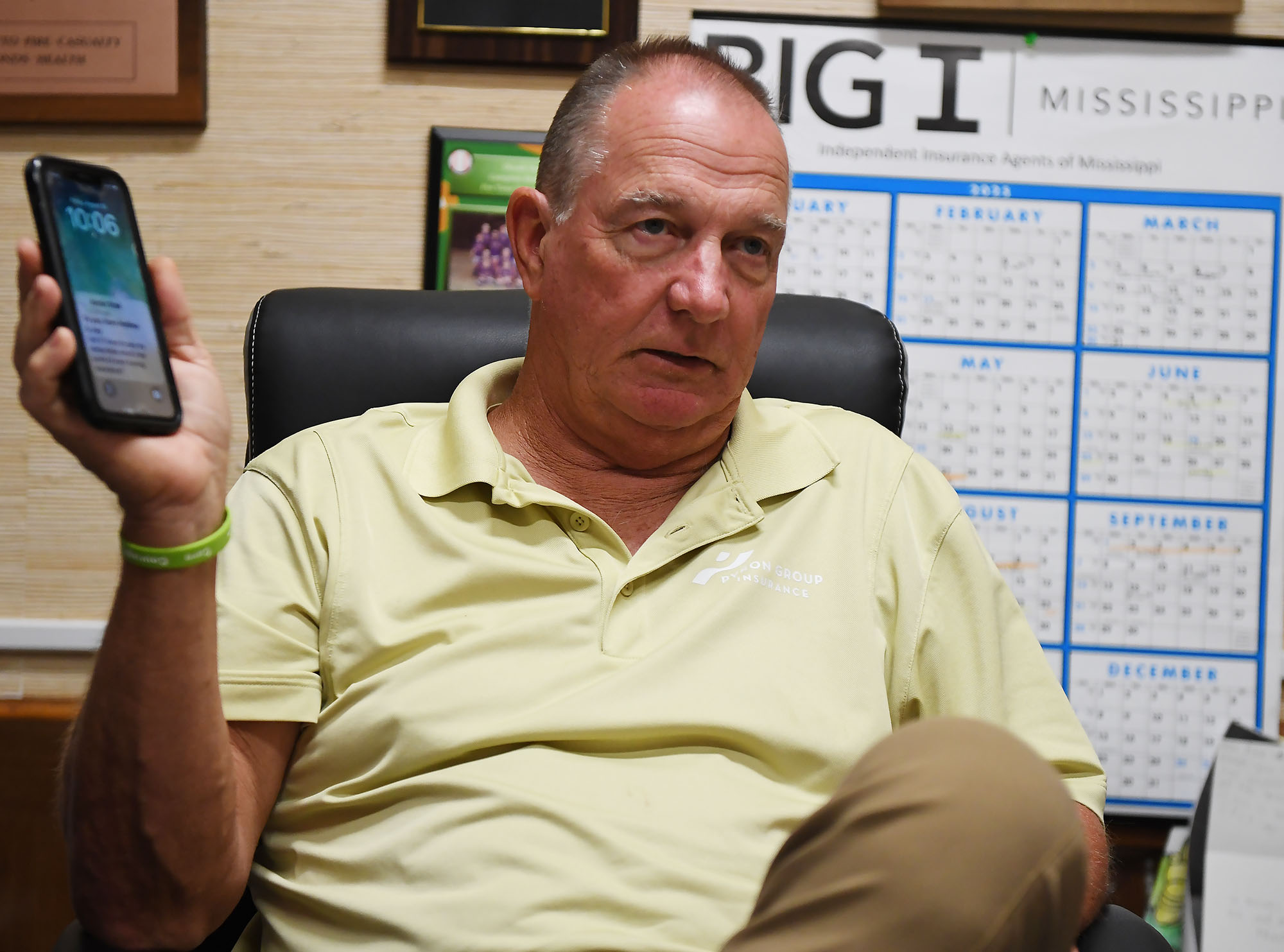
That’s why it’s critical for FEMA’s individual assistance to get approved quickly — ideally, within two weeks of a disaster, said Smith, who’s now a disaster consultant for governments and companies.
“You want to keep the people where they are living. You want to ensure those communities are going to continue to be viable and recover,” Smith said. “And the earlier that individual assistance can be delivered … the earlier recovery can start.”
In the periods waiting for declarations, the pressure falls on local officials and volunteers to care for victims and distribute supplies.
In Walthall County, where Tylertown is, insurance agent Les Lampton remembered watching the weather news as the first tornado missed his house by just an eighth of a mile. Lampton, who moonlights as a volunteer firefighter, navigated the collapsed trees in his yard and jumped into action. About 45 minutes later, the second tornado hit just a mile away.
“It was just chaos from there on out,” Lampton said.
Walthall County, with a population of about 14,000, hasn’t had a working tornado siren in about 30 years, Lampton said. He added there isn’t a public safe room in the area, although a lot of residents have ones in their home.
Rural areas with limited resources are hit hard by delays in receiving funds through FEMA’s public assistance program, which, unlike individual assistance, only reimburses local entities after their bills are paid. Long waits can stoke uncertainty and lead cost-conscious local officials to pause or scale-back their recovery efforts.

In Walthall County, officials initially spent about $700,000 cleaning up debris, then suspended the cleanup for more than a month because they couldn’t afford to spend more without assurance they would receive federal reimbursement, said county emergency manager Royce McKee. Meanwhile, rubble from splintered trees and shattered homes remained piled along the roadside, creating unsafe obstacles for motorists and habitat for snakes and rodents.
When it received the federal declaration, Walthall County took out a multimillion-dollar loan to pay contractors to resume the cleanup.
“We’re going to pay interest and pay that money back until FEMA pays us,” said Byran Martin, an elected county supervisor. “We’re hopeful that we’ll get some money by the first of the year, but people are telling us that it could be [longer].”
Lampton, who took after his father when he joined the volunteer firefighters 40 years ago, lauded the support of outside groups such as Cajun Navy, Eight Days of Hope, Samaritan’s Purse and others. That’s not to mention the neighbors who brought their own skid steers and power saws to help clear trees and other debris, he added.
“That’s the only thing that got us through this storm, neighbors helping neighbors,” Lampton said. “If we waited on the government, we were going to be in bad shape.”
Lieb reported from Jefferson City, Missouri, and Wildeman from Hartford, Connecticut.
Update 98/25: This story has been updated to include a White House statement released after publication.
This article first appeared on Mississippi Today and is republished here under a Creative Commons Attribution-NoDerivatives 4.0 International License.
The post Presidents are taking longer to declare major natural disasters. For some, the wait is agonizing appeared first on mississippitoday.org
Note: The following A.I. based commentary is not part of the original article, reproduced above, but is offered in the hopes that it will promote greater media literacy and critical thinking, by making any potential bias more visible to the reader –Staff Editor.
Political Bias Rating: Center-Left
This article presents a critical view of the Trump administration’s handling of disaster declarations, highlighting delays and their negative impacts on affected individuals and communities. It emphasizes concerns about government downsizing and reduced federal support, themes often associated with center-left perspectives that favor robust government intervention and social safety nets. However, it also includes statements from Trump administration officials defending their approach, providing some balance. Overall, the tone and framing lean slightly left of center without being overtly partisan.
Mississippi Today
Northeast Mississippi speaker and worm farmer played key role in Coast recovery after Hurricane Katrina
The 20th anniversary of Hurricane Katrina slamming the Mississippi Gulf Coast has come and gone, rightfully garnering considerable media attention.
But still undercovered in the 20th anniversary saga of the storm that made landfall on Aug. 29, 2005, and caused unprecedented destruction is the role that a worm farmer from northeast Mississippi played in helping to revitalize the Coast.
House Speaker Billy McCoy, who died in 2019, was a worm farmer from the Prentiss, not Alcorn County, side of Rienzi — about as far away from the Gulf Coast as one could be in Mississippi.
McCoy grew other crops, but a staple of his operations was worm farming.
Early after the storm, the House speaker made a point of touring the Coast and visiting as many of the House members who lived on the Coast as he could to check on them.
But it was his action in the forum he loved the most — the Mississippi House — that is credited with being key to the Coast’s recovery.
Gov. Haley Barbour had called a special session about a month after the storm to take up multiple issues related to Katrina and the Gulf Coast’s survival and revitalization. The issue that received the most attention was Barbour’s proposal to remove the requirement that the casinos on the Coast be floating in the Mississippi Sound.
Katrina wreaked havoc on the floating casinos, and many operators said they would not rebuild if their casinos had to be in the Gulf waters. That was a crucial issue since the casinos were a major economic engine on the Coast, employing an estimated 30,000 in direct and indirect jobs.
It is difficult to fathom now the controversy surrounding Barbour’s proposal to allow the casinos to locate on land next to the water. Mississippi’s casino industry that was birthed with the early 1990s legislation was still new and controversial.
Various religious groups and others had continued to fight and oppose the casino industry and had made opposition to the expansion of gambling a priority.
Opposition to casinos and expansion of casinos was believed to be especially strong in rural areas, like those found in McCoy’s beloved northeast Mississippi. It was many of those rural areas that were the homes to rural white Democrats — now all but extinct in the Legislature but at the time still a force in the House.
So, voting in favor of casino expansion had the potential of being costly for what was McCoy’s base of power: the rural white Democrats.
Couple that with the fact that the Democratic-controlled House had been at odds with the Republican Barbour on multiple issues ranging from education funding to health care since Barbour was inaugurated in January 2004.
Barbour set records for the number of special sessions called by the governor. Those special sessions often were called to try to force the Democratic-controlled House to pass legislation it killed during the regular session.
The September 2005 special session was Barbour’s fifth of the year. For context, current Gov. Tate Reeves has called four in his nearly six years as governor.
There was little reason to expect McCoy to do Barbour’s bidding and lead the effort in the Legislature to pass his most controversial proposal: expanding casino gambling.
But when Barbour ally Lt. Gov. Amy Tuck, who presided over the Senate, refused to take up the controversial bill, Barbour was forced to turn to McCoy.
The former governor wrote about the circumstances in an essay he penned on the 20th anniversary of Hurricane Katrina for Mississippi Today Ideas.
“The Senate leadership, all Republicans, did not want to go first in passing the onshore casino law,” Barbour wrote. “So, I had to ask Speaker McCoy to allow it to come to the House floor and pass. He realized he should put the Coast and the state’s interests first. He did so, and the bill passed 61-53, with McCoy voting no.
“I will always admire Speaker McCoy, often my nemesis, for his integrity in putting the state first.”
Incidentally, former Rep. Bill Miles of Fulton, also in northeast Mississippi, was tasked by McCoy with counting, not whipping votes, to see if there was enough support in the House to pass the proposal. Not soon before the key vote, Miles said years later, he went to McCoy and told him there were more than enough votes to pass the legislation so he was voting no and broached the idea of the speaker also voting no.
It is likely that McCoy would have voted for the bill if his vote was needed.
Despite his no vote, the Biloxi Sun Herald newspaper ran a large photo of McCoy and hailed the Rienzi worm farmer as a hero for the Mississippi Gulf Coast.
This article first appeared on Mississippi Today and is republished here under a Creative Commons Attribution-NoDerivatives 4.0 International License.
The post Northeast Mississippi speaker and worm farmer played key role in Coast recovery after Hurricane Katrina appeared first on mississippitoday.org
Note: The following A.I. based commentary is not part of the original article, reproduced above, but is offered in the hopes that it will promote greater media literacy and critical thinking, by making any potential bias more visible to the reader –Staff Editor.
Political Bias Rating: Centrist
The article presents a factual and balanced account of the political dynamics surrounding Hurricane Katrina recovery efforts in Mississippi, focusing on bipartisan cooperation between Democratic and Republican leaders. It highlights the complexities of legislative decisions without overtly favoring one party or ideology, reflecting a neutral and informative tone typical of centrist reporting.
-
News from the South - North Carolina News Feed7 days ago
What we know about Charlie Kirk shooting suspect, how he was caught
-
News from the South - North Carolina News Feed7 days ago
Federal hate crime charge sought in Charlotte stabbing | North Carolina
-
Our Mississippi Home5 days ago
Screech Owls – Small but Cute
-
News from the South - Arkansas News Feed6 days ago
NW Arkansas Championship expected to bring money to Rogers
-
News from the South - North Carolina News Feed7 days ago
Under pressure, some immigrants are leaving American dreams behind
-
Mississippi News Video7 days ago
Mississippi Science Fest showcases STEAM events, activities
-
News from the South - Florida News Feed7 days ago
CBS Miami highlights free mammogram program with mobile mammovan
-
News from the South - Texas News Feed7 days ago
Safe Central Texas meet-up spots for online purchases
